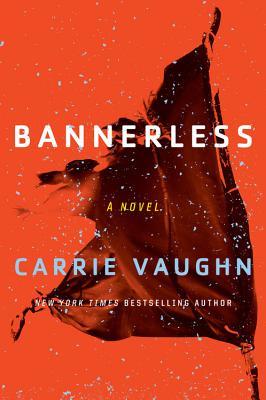TITLE: Someone in Time: Tales of Time-Crossed Romance
EDITOR: Jonathan Strahan
330 pages, Rebellion Publishing, ISBN 9781786185099 (softcover, also available in audiobook, e-book)
DESCRIPTION: (from inside front cover): Even time travel can’t unravel love.
Time-travel is a way for writers to play with history and imagine different futures – for better, or worse.
When romance is thrown into the mix, time-travel becomes a passionate tool, or heart-breaking weapon. A time agent in the 22nd century puts their whole mission at risk when they fall in love with the wrong person. No matter which part of history a man visits, he cannot escape his ex. A woman is desperately in love with the time-space continuum, but it doesn’t love her back. As time passes and falls apart, a time-traveler must say goodbye to their soulmate.
With stories from best-selling and award-winning authors such as Seanan McGuire, Alix E. Harrow and Nina Allan, this anthology gives a taste for the rich treasure trove of stories we can imagine with love, loss and reunion across time and space.
MY RATING: 5 out of 5 stars
MY THOUGHTS: In lesser hands, an anthology of romantic time-travel stories could have been very one-note and predictable. Thankfully, editor Jonathan Strahan is not “lesser hands.” Someone In Time: Tales of Time-Crossed Romance fully embraces diversity: not just in the types of romantic couples featured but also in the types of time-travel, points of view, and genres.
Eight of the sixteen stories feature LGBTQIA+ characters in a variety of relationship configurations (possibly 9; in one story I’m unsure of the narrator’s gender identity which is probably me not noticing context clues). Some of these queer protagonists are just discovering their sexual orientation, some have been out for years; some of the relationships are new and fraught with “will they or won’t they” tension while some are long-term relationships facing new challenges. Of course, the same is true for the eight stories in the anthology that focus on straight characters, but I still find it noteworthy when stories featuring LGBTQIA+ protagonists in anthologies like this aren’t focused on the trauma of being queer but rather on the ups-and-downs of all romantic relationships. Not that these stories ignore the very real consequences of being queer in certain times and places; they just don’t make that the sole focus of the stories.
Time-travel is thought of as an SFnal sub-genre, usually involving a specific and iconic (or iconic-looking) device: a tricked-out car, a TARDIS, a time-bubble or -machine. And a number of these stories fit that description, with varying degrees of detail as to what the device looks like and the science behind it. But several of these stories move time-travel into the realm of fantasy: the time-travel is an inherent ability, or something accomplished through magic. Part of the fun of starting each new story was wondering how the time-travel itself would be expressed, and the variety helped keep things interesting.
The anthology starts strong right out of the gate with the one-two-three punch of Alix E. Harrow’s “Roadside Attraction,” Zen Cho’s “The Past Life Reconstruction Service,” and Seanan McGuire’s “First Aid.” All three feature LGBTQIA protagonists (one who only relaxes into his identity as the story progresses, one mourning a broken relationship, and one who is out) who meet their romantic partners through different methods of time-travel (a roadside attraction that no one seems to really understand, a mental stimulation device, and a time-bubble that malfunctions).
Sarah Gailey’s “I Remember Satellites” gives us time-travel as a method of making sure history stays on track, and the sacrifices some time-travelers must make to be sure it does. It felt of a piece with Theodora Goss’s “A Letter to Merlin,” in which time-travelers inhabit already-existing historical figures, essentially taking them over to be sure they do what they’re supposed to.
The fantasy side of time-travel is explored in Rowan Coleman’s sweet “Romance: Historical” (who can resist a romance across the decades set in a mysterious bookshop?) and Carrie Vaughn’s “Dead Poets” (which involves an ancient drinking vessel and two quite different historical poets).
Smack in the middle of the anthology, but thankfully not one right after the other, are a couple of truly heart-breaking stories that play with the nature of time-travel: Elizabeth Hand’s “Chronia,” in which the narrator explains to a lover how many times they have and have not met as chronal fluxes mess with their interpersonal timeline, and “Unabashed, or, Jackson, Whose Cowardice Tore a Hole in the Chronoverse” by Sam J. Miller, in which the narrator recounts all the ways in which he might have saved his new boyfriend from being killed had he not been so afraid of the question “walk me home?”.
Leave it to Catherynne M. Valente to craft a story around the ever-changing, gender-fluid, age-fluid personification of the Space-Time Continuum in “The Difference Between Love and Time,” which is both sweet and heart-breaking.
The exploitation of past resources by travelers from the future infuse Lavanya Lakshminarayan’s “Bergamot and Vetiver” and Ellen Klages’ “Time Gypsy” with an extra layer of late-stage capitalism topicality that enhances rather than overwhelms the romance at the heart of each story.
The anthology also includes stories by Jeffrey Ford (“The Golden Hour”), Nina Allen (“The Lichens”), Margo Lanagan (“The Place of All Souls”), and Sameem Siddiqui (“Timed Obsolescence”) that are equally as good as the stories I’ve already mentioned. In fact, I don’t think there’s a weak story in the bunch.
Someone in Time: Tales of Time-Crossed Romance will appeal to romance readers and speculative fiction readers alike.
I received an advance reading copy of this book for free from the publisher via NetGalley in exchange for an honest review. This does not affect my opinion of the book or the content of my review. Because of how delayed I am in posting this, Someone in Time is already available in print, e-book, and audio formats.


